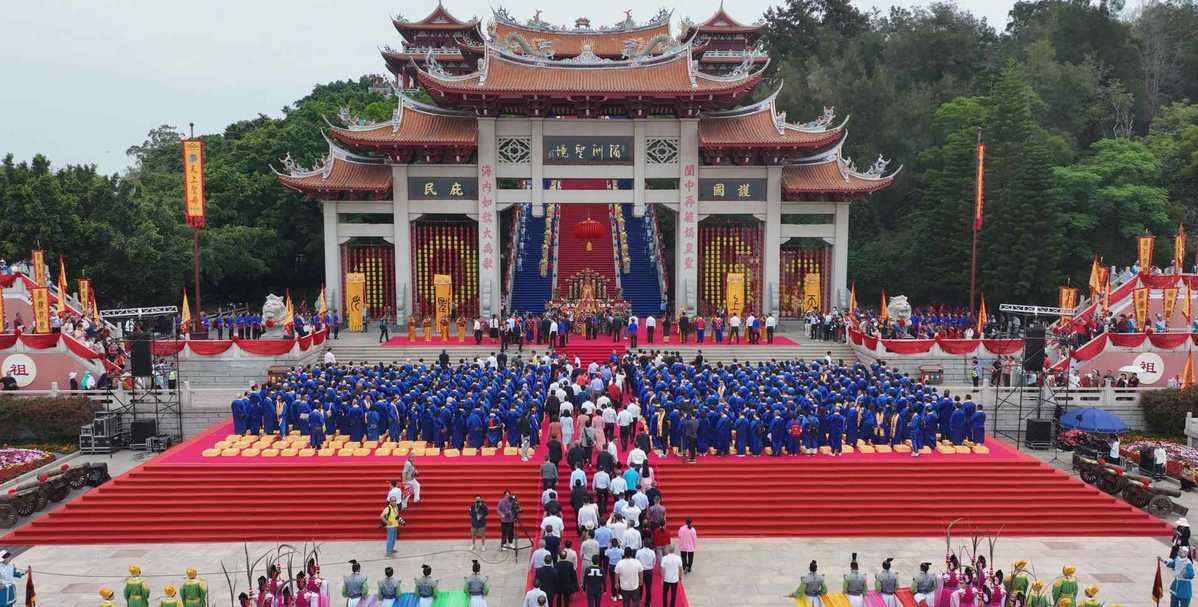Safeguarding the shared roots across the Taiwan Strait


The ties between Fujian and Taiwan run deep, with folks on both sides "of the same lineage, with common gods, and sharing the same cultural heritage. "This shared cultural foundation is crucial for pushing ahead with the integration and development of the two sides across the Taiwan Strait and achieving peaceful unity.
Lately, people in Taiwan have been buzzing about the mainland's TV show "Blossoms Shanghai" aired by CCTV 8, and the viral dance "Subject Three" that has popped up in Taipei's Ningxia Night Market. Chinese mainland eats like luosifen (or river snail rice) are also a hit in Taiwan. These trends show the appeal of some new mainland cultures to the people of Taiwan in recent years. But at its core, it also reflects the common culture and roots between the two sides, a cultural connection that hasn't changed over time or distance.
Common customs and cultural rituals of Goddess Mazu Ceremonies, Chen Jinggu, and Baosheng Dadi from both sides of the Taiwan Strait have been included in the national intangible cultural heritage list while numerous cultural artifacts related to Taiwan, such as the the Guandi temple in Dongshan, earthen buildings, and Gulangyu island included in the World Cultural Heritage list. This has facilitated events like the Cross-Strait Forum and the Cross-Strait (Xiamen) Cultural Industries Fair. The Fuzhou Strait Symphony Orchestra, leveraging the cooperative advantages between Fujian and Taiwan, has produced artistic works like the symphonic visual piece "Strait, Strait" and the musical "Fuchun Combined".
The exchange of intangible cultural heritage between Fujian and Taiwan has become more frequent, effectively promoting cultural exchange across the Taiwan Strait. Through cultural exchange, there's a deeper understanding, emotional connection, cultural identity, and belief in peaceful unity among people on both sides.
While recognizing the significant role of the Fujian and Taiwan cultures, it's essential to think about how to further promote their integration and development.
First, there's a need to explore and develop more aspects of Fujian and Taiwan cultures, strengthen research, inheritance, and protection, and promote the innovative development of the corresponding cultural heritage.
Second, there should be innovation in presenting Fujian and Taiwan cultures. For example, digitizing Fujian and Taiwan cultures ensures the organized integration of dispersed cultural assets. Building a shared platform for Fujian and Taiwan cultures ensures centralized presentation, openness, and dissemination, promoting comprehensive sharing. Additionally, presenting Fujian and Taiwan cultures in popular and widely appreciated ways can lead a cultural trend. For example, the "Xunpu Woman Culture" sparked by the stunning portrayal of a woman wearing Xunpu hairpin made of flowers by actress Zhao Liying quickly became an enduring trend on the internet.
Lastly, promoting the revitalization and transformation of Fujian and Taiwan cultures can empower other industries. By leveraging Fujian and Taiwan cultures, and combining it with education, tourism, homestays, cultural and creative products, and festive events, various new forms of tourism and diverse development models are generated, driving the development of the cultural tourism industry.
The author is a lecturer at the College of Marine Culture and Law, Jimei University.
The views don't necessarily reflect those of China Daily.
If you have a specific expertise, or would like to share your thought about our stories, then send us your writings at opinion@chinadaily.com.cn, and comment@chinadaily.com.cn.



































